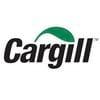Performance parameters and tissue zinc deposition in broiler chickens in response to different levels of hydroxy source of zinc
Published: October 13, 2025
Source : T.T.H. NGUYEN 1, N.K. MORGAN 1, J.R. ROBERTS 1, S.B. WU 1, M. TOGHYANI 1 and R.A. SWICK 1 / 1 School of Environmental & Rural Science, University of New England, Armidale.
Zinc (Zn) is a fundamental trace mineral for growth, development and health in broilers. The form of Zn has a direct impact on its biological function in broiler chickens (Bun et al., 2011). Hydroxy forms, Zn hydroxychloride (IBZ) can potentially offer advantages over other inorganic and organic sources. This study was designed to determine the optimum level of IBZ in broiler diets, by evaluating the effect of different levels on growth performance and zinc deposition in tissues. A total of 864 one-day-old male Ross 308 chicks were housed in floor pens on pine shaving litter and were randomly assigned to seven treatments, resulting in seven replicates of 18 chicks per pen. Diets were wheat-soybean meal based and birds had ad libitum access to feed and water throughout the trial period. The positive control (PC) treatment was supplemented with inorganic zinc (50 mg/kg ZnO and 50 mg/kg ZnSO4) and the negative control treatment (NC) contained no supplemental Zn. The remaining 5 treatments contained Zn as IBZ at 20, 40, 60, 80, 100 mg/kg. The treatments were fed from d0 to d35, as starter (d0 - d14) and grower (d14 - d35). Body weight gain (BWG), livability (LIV) and feed intake (FI) were measured from d0-35 and used to calculate adjusted feed conversion ratio (FCR). Tibias from three birds from each pen were collected on d14 and liver samples from three birds each pen were collected on d35. Zinc concentration was analyzed in the samples by ICP-OES on an individual bird basis. The results showed that FCR significantly improved for birds offered 100 mg/kg IBZ compared to those fed the PC treatment or treatment with 20 mg/kg IBZ (P < 0.001). Body weight gain from d0-35 was higher in birds fed IBZ at 80 and 100 mg/kg compared to those fed the NC treatment and IBZ at 20 mg/kg (P < 0.001). Zn source and level had no impact on FI, LIV or Zn concentration in the liver (P > 0.05). Tibia Zn concentration was significantly lower (P < 0.001) in birds on the NC treatment compared to those on any other treatment, and was numerically highest in birds fed 100 mg/kg IBZ. In conclusion, feeding broilers 40 - 60 mg/kg IBZ support performance parameters similar to that of 100 mg/kg inorganic Zn in the diet. Also, supplementation of 100 mg/kg IBZ results in better feed efficiency.
Table 1 – Growth performance parameters and zinc concentration in liver and tibia of broiler chickens.

ACKNOWLEDGEMENTS: This study was funded by Trouw Nutrition, a Nutreco company.
Presented at the 29th Annual Australian Poultry Science Symposium 2018. For information on the latest and future editions, click here.
Bun SD, Guo YM, Guo FC, Ji FJ & Cao H (2011) Poult. Sci. 90: 1220-1226.
Content from the event:
Related topics:
Mentioned in this news release:



Show more
Recommend
Comment
Share

Would you like to discuss another topic? Create a new post to engage with experts in the community.














